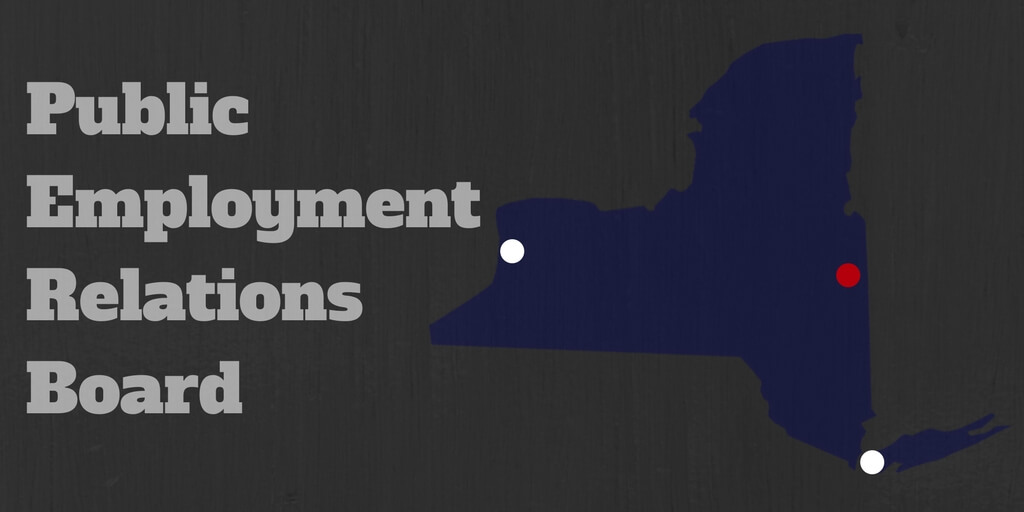The New York Public Employment Relations Board (PERB) administers the Taylor Law, which extends collective bargaining rights to public employees in the state. The Taylor Law created PERB with its enactment in 1967.
Since July 2010, PERB has also administered the New York State Employment Relations Act, which governs collective bargaining for private employers in New York over which the National Labor Relations Board (NLRB) does not exercise jurisdiction. However, because the NLRB’s jurisdiction over private employers is broad, the overwhelming majority of PERB’s work still involves only public (governmental) employers.
PERB is similar to the NLRB in that it operates primarily through adjudication. Whereas the federal Labor Board processes “unfair labor practice” charges, PERB handles “improper practice” charges. Both entities oversee representation cases–determinations of which labor organization, if any, represents a particular group of employees.
PERB Board
The governor appoints the 3 members of the PERB Board, with the advice and consent of the State senate. No more than 2 of the board members can be from the same political party. Board members hold 6-year terms, with the governor appointing one member to serve as the chair.
The Board and most of the agency’s staff operate out of Albany. There are also regional offices in Brooklyn and Buffalo.
John Wirenius chairs the Board. Robert Hite is another board member. The third seat is vacant.
PERB Representation Procedures
Under the Taylor Law, public employers in New York can voluntarily recognize a labor organization as the bargaining representative of certain employees.
Where the employer has not voluntarily recognized a union to represent select employees, the union can file a petition with PERB seeking certification as the employees’ exclusive bargaining representative. The union must also file a “showing of interest” by at least 30 percent of the employees in the proposed bargaining unit.
The employer, and other interested parties (e.g., other union(s) claiming majority support), have 10 days to file a response to the representation petition. Then PERB investigates the facts surrounding the petition to determine whether there is majority support for the union representation. If necessary, there may be a hearing before an administrative law judge as part of its inquiry.
Unlike in the NLRB representation process, PERB need not hold an election before determining the question of representation. Sometimes, however, more than one union seeks representation of the same employees. Or there is insufficient evidence of support for certification without an election. Then PERB will hold an election to determine the representation status.
There are also procedures for decertification and unit clarification.
Role in Collective Bargaining
PERB oversees various procedures related to impasse resolution in collective bargaining. In other words, it gets involved when New York public employers and the unions representing their employees can’t agree on terms of employment.
The Office of Conciliation provides services related to mediation, fact-finding, and interest arbitration.
Either party to the negotiation of a labor agreement may file a declaration of impasse when it believes the parties cannot make further progress on their own. If the Director of Conciliation finds the declaration sufficient, a mediator will be appointed.
If the mediation process does not resolve the negotiations, then the matter will proceed either to fact-finding or interest arbitration. Fact-finding applies to most negotiations involving public labor negotiations in New York. However, interest arbitration prominently applies to police office and fire-fighter labor contracts.
Improper Practice Charges
When public sector unions or employers feel that their rights under the Taylor Law have been violated, they may file an improper practice (IP) charge with PERB.
Once an agency director initially reviews the IP charge and forwards it to the non-filing party, the respondent party must file an answer to the charge (among other possible responses).
Next, PERB typically schedules a conference between the parties with an Administrative Law Judge. If the conference does not resolve the dispute, then the case may proceed to a hearing before an ALJ.
If either party does not agree with the ALJ’s decision following a hearing, they may appeal to the PERB Board.
Know Before You Go
The New York Public Employment Relations Board needn’t be a scary place. Still, most employers don’t want to end up there. Yes, sometimes employers initiate PERB cases. But unions file most of them.
The best way to avoid PERB is to make sure you are following the Taylor Law. But, even then, negotiation impasse may be unavoidable at some point.
Especially if you don’t have experience with PERB and its procedures, you shouldn’t just go in to a conference or mediation assuming everything will go your way. Usually, it will be best to consult your city/town/village/county/school attorney first. If they don’t have the expertise, then you may need to also speak to a lawyer who regularly handles labor and employment matters for public employers.
